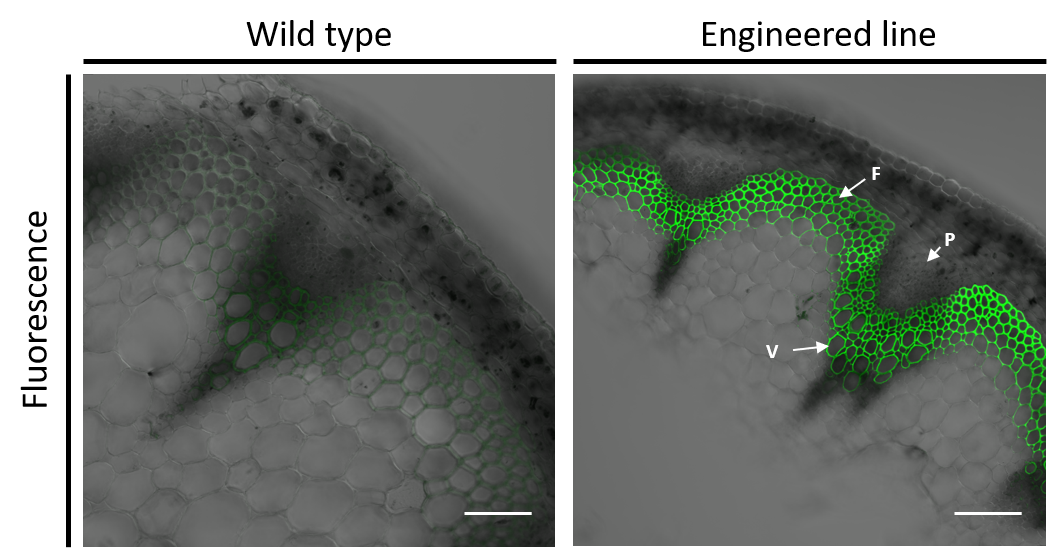In addition to engineering lignin structure by using genes of the host plant itself (modification of H/G/S/benzodioxanes/aldehydes/ferulates levels; Chanoca et al., 2019), it is also possible to engineer easily degradable lignin polymers by using genes from other taxa in a synthetic biology approach, as discussed in Vanholme et al. (2012). ). In this approach, the host plant is transformed with one or multiple heterologous genes that encode biosynthetic enzymes that are able to make a monolignol substitute. When translocated to the cell wall and incorporated into the lignin polymer, this alternative monomer generates a bond that is more susceptible to the biomass pretreatment that is used to degrade the lignin polymer. By heterologous expression of two genes from Curcuma longa, we have been able to engineer Arabidopsis plants that incorporate diferuloyl methane (curcumin) into their lignin, thereby making the new lignin more susceptible to alkaline pretreatments (Oyarce et al., 2019). Similarly, by overexpression of F6’H and COSY in Arabidopsis stems, we have been able to introduce the coumarin scopoletin into the lignin polymer, making the cell walls easier degradable upon alkaline pretreatments (Hoengenaert et al., 2022).

